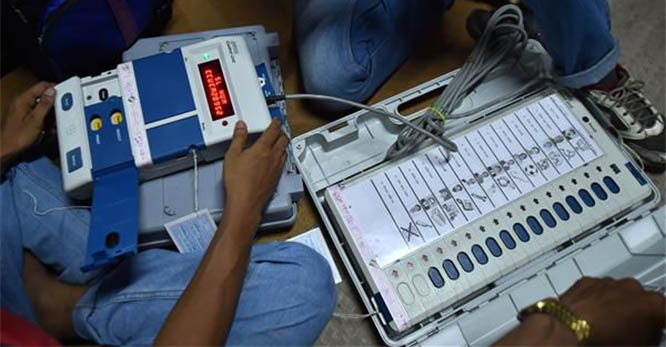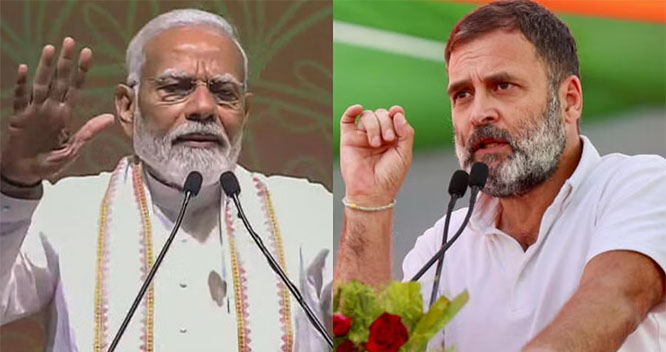Jammu, May 18: The family of Subedar Paramjit Singh, one of the two Indian soldiers who were beheaded this month while patrolling the de facto border between India and Pakistan, wanted to see him one more time before consigning his body to the flames.

“The Army people told us the head is missing,” Singh said. “But we were not convinced because they were not allowing us to see the body. What is the condition of the body? What is missing, and what is intact?” Finally the two sides compromised, limiting the viewing to a few moments by members of the immediate family and then moving on to the cremation. “What could we do?” Singh said.
Acts of extreme brutality, including beheadings and mutilations, occur with some regularity along the Line of Control, the 450-mile disputed military frontier that divides Kashmir into Indian and Pakistani territory.
Assigned to remote outposts, the soldiers of both countries serve for years in a state of unrelenting tension, near enough to the enemy to exchange shouted obscenities. Heavily armed teams, often a mixture of militants and uniformed troops, cross the line to ambush an outnumbered post or patrol, with the goal of inflicting maximum casualties in a brief time. Beheadings are seen as a particularly humiliating act.
The gruesome killings often lead the other side to seek vengeance, adding to the volatility of an already tense standoff between the two nuclear-armed nations. Since the beheadings on May 1, that stretch of the Line of Control has been hit by heavy shelling, and thousands of civilians have been evacuated from surrounding villages.
Newspapers have reported around two dozen beheadings or mutilations of soldiers on the Pakistani and Indian sides since 1998, typically followed by denials of involvement by the opposing force.
Lt General H S Panag, a former chief of the army’s northern command, described it as a “primordial conflict” in which it was difficult to know which acts were carried out by uniformed forces and which by militants.
“The unit feels bad, and there is a clamour for revenge,” Panag said. “Laymen expect us to adhere to the rules, but these things do happen. There is nothing new about it. It is just human instinct.”
Military veterans say such acts occur more often than the public knows, kept under wraps lest they set off a spiral of escalation. But as time goes on, military experts say, concealing these attacks is becoming harder and harder to do, with potentially grave consequences.
“Within the army, we used to keep quiet,” Panag said. “Now the soldiers have mobiles; the porter who works at the post has a mobile. Everyone is in the glare of a camera. Families speak. I don’t think such a matter can be hidden today.” The families of those who were beheaded receive intense and focused attention from government officials, but relatives are still often frustrated with the government’s response, leading them to speak out.
Last year, a daily newspaper printed internal government documents about a 2011 Indian army raid called Operation Ginger, which was prompted by a Pakistani attack that had killed six Indian soldiers. Two of the dead were beheaded. The response came a month later: an ambush that left at least eight Pakistanis dead, three of them beheaded, according to documents cited by the newspaper. The newspaper characterised the soldiers’ heads as “trophies.”
Beheading carries extraordinary emotional power for troops and has for many centuries, said General Ved Prakash Malik, who was chief of the Indian army during the Kargil conflict, a months-long war India and Pakistan fought along the Line of Control in 1999.
“You know, from the old wars, beheading is being considered, for the victors, a kind of a big thing they had done, and for the loser, a big insult that they have suffered,” he said.
Both the Pakistani and Indian armies also were imprinted by the British military tradition, which puts a “massive emphasis on unit loyalty,” said Myra MacDonald, a journalist and author of Defeat Is an Orphan: How Pakistan Lost the Great South Asian War. According to the Indian army, more than 4,500 Indian soldiers have been killed or injured along the Line of Control since 2001.
“If you see a couple of your mates killed, you certainly would be in a blind rage to avenge them,” she said. “This is what happens when men fight wars. On one hand, you know where the limits are, and on the other hand, you get this ground-level rage when you see the man next to you killed.”
In the latest beheadings, on May 1, two Indian soldiers were part of a team patrolling between two posts when a Pakistani “border action team” — often a combination of militants and regular Pakistani forces — attacked and killed them, the Indian army said.
Categorical denial
Pakistan has denied any involvement. “Pakistan army is a professional army,” said Major General Asif Ghafoor, a spokesman of Pakistan army. “There is no history of Pakistan army desecrating a dead body, no matter it is from India.”
Ishwar Chand, 28, whose father, Prem Sagar, was one of the two men beheaded in that attack, said his father’s body was missing its head and hands. “There was no neck even,” he said. “How can we believe this is the body of our father? We are told by officials that the army will not lie in this situation.” He said he expected a vigorous retaliation. “The government should take revenge for my father,” he said. “There is not much population on the border. The army should be given orders to fire back, to shoot.”
The beheaded man’s relatives, outraged at what had happened, took a hard line with the government, threatening not to cremate the body unless they received a visit from Prime Minister Narendra Modi or from Yogi Adityanath, the chief minister of their state, Uttar Pradesh. Ten days later, Adityanath and his entourage made a 15-minute visit to the village, delivered more than Rs 6 lakh in compensation to the family and promised Chand a government job.
In advance of the meeting, officials arrived to install air-conditioning, carpets and sofas in the family’s home, and a generator was installed to supply uninterrupted power, Chand said. Within minutes of Adityanath’s departure, all the amenities were removed. Though other relatives grumbled, Chand said it was good enough.
“I would have been happier if he would have met us as we are,” he said. “Whatever it is, he spared time for us. That is a big thing.”







Comments
Add new comment